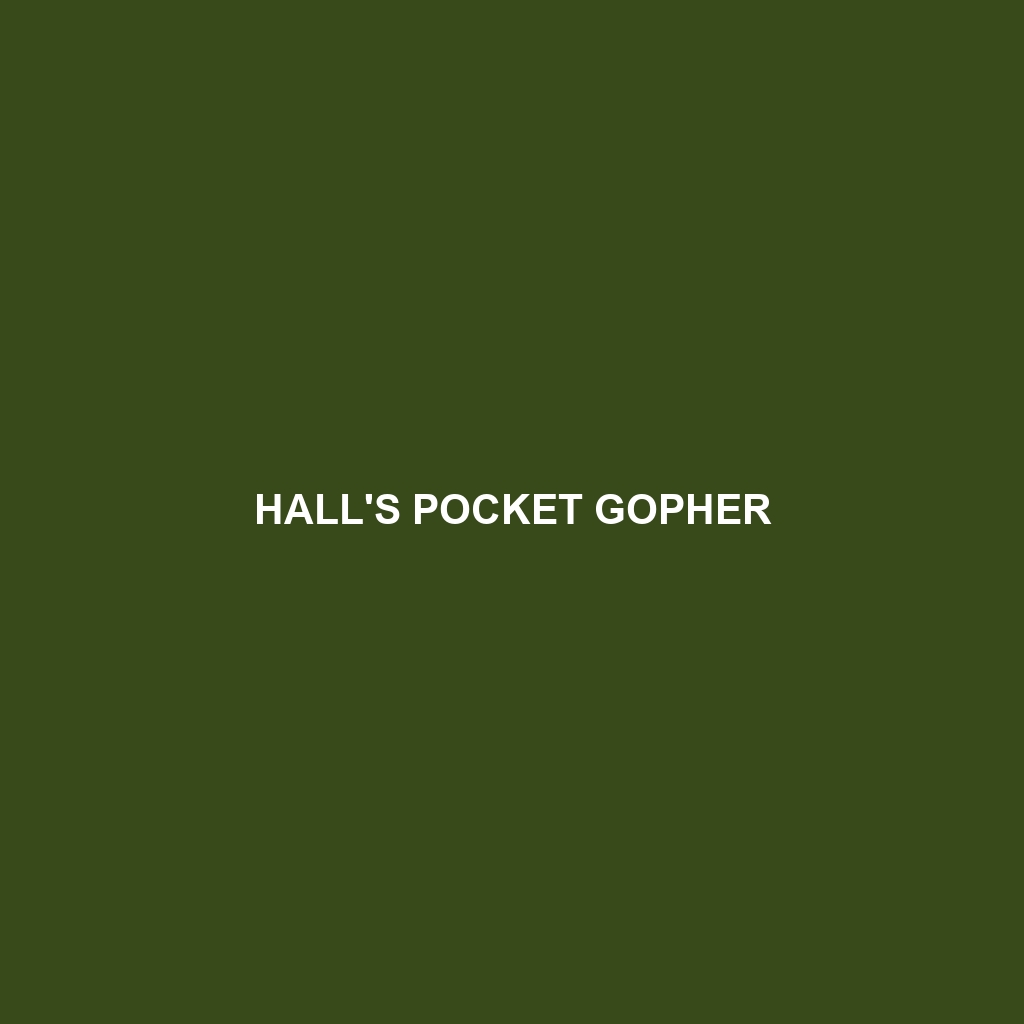Hall’s Pocket Gopher
Common Name: Hall’s Pocket Gopher
Scientific Name:
Habitat
Hall’s Pocket Gopher is primarily found in the grasslands and shrublands of the western United States. Its geographical range includes areas in California, Arizona, and New Mexico, where it thrives in well-drained soils. These rodents prefer habitats with abundant vegetation, which provide both shelter and food.
Physical Characteristics
This species typically measures between 8 to 10 inches in length, with a compact body that aids its burrowing lifestyle. The Hall’s Pocket Gopher has a soft coat ranging from tan to brown, often featuring lighter underparts. Distinctive features include its large, external cheek pouches and strong forelimbs with long claws, ideal for digging.
Behavior
Hall’s Pocket Gopher is a nocturnal creature, exhibiting behaviors like digging expansive tunnel systems underground. These gophers are highly territorial, marking their burrows with scent. They are generally solitary, emerging mainly during the night to forage for food.
Diet
The diet of Hall’s Pocket Gopher consists predominantly of roots, tubers, and various grasses. These rodents have a preference for vegetative materials, which they efficiently gather and store in their burrows for later consumption. Their feeding habits play a significant role in the aeration of the soil and the cycling of nutrients in their habitat.
Reproduction
Hall’s Pocket Gophers typically breed once a year, with the breeding season occurring in the spring. After a gestation period of about 3 weeks, a litter of 2 to 6 young is born. The offspring are weaned at around 4 weeks and reach maturity by the end of their first year.
Conservation Status
Currently, Hall’s Pocket Gopher is categorized as vulnerable due to habitat loss and land development. Conservation efforts focus on preserving their natural habitats and mitigating the impact of agricultural expansion.
Interesting Facts
Hall’s Pocket Gophers are fascinating for their ability to impact their ecosystem significantly. They are known for their exceptional tunneling skills, which can turn the soil and promote healthy plant growth. Additionally, their cheek pouches allow them to transport food back to their burrows efficiently.
Role in Ecosystem
Hall’s Pocket Gopher plays a crucial role in its ecosystem by aerating the soil and facilitating plant growth through its burrowing activities. Their tunnels provide habitats for other small animals and contribute to the distribution of seeds and nutrients, making them an essential component of the grassland and shrubland environments they inhabit.
